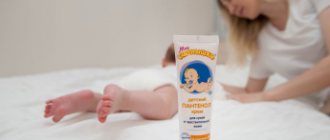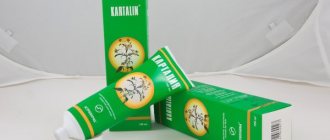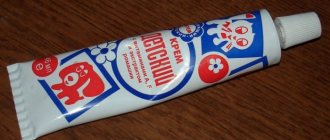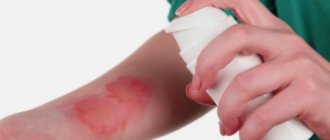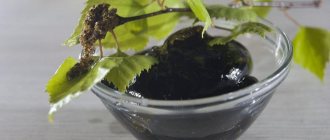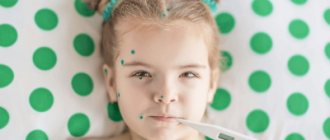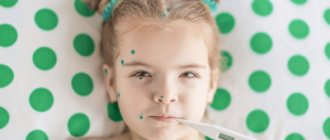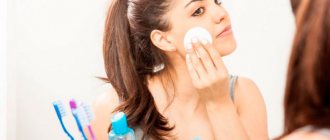This organ has unique regenerative abilities. But in some cases, the ability of the dermis to heal itself may be reduced and sometimes even suppressed. We are talking about large-area lesions: injuries, burns and chronic pathologies. In these situations, the skin needs help to quickly cope with the pathogenic process.
To activate regeneration processes in the dermis, drugs are often prescribed, the main active ingredient of which is dexpanthenol. Many patients have difficulty choosing a specific medication. They don’t know which is better – Bepanten or Panthenol, and what the difference is between these medications. It's time to dot the i's in this matter.
What is the mechanism of drug action
The ointment has 3 main effects. It promotes tissue healing, affects metabolism and relieves inflammation. After contact with the wound area, the active substance interacts with the main proteins, for example, albumin. The active substance is involved in processes such as carbohydrate and lipid metabolism, the formation of hormones, mediators and porphyrins. "Dexpanthenol" has a regenerative effect not only on tissues, but also on mucous membranes. The drug also helps stabilize cellular metabolism and accelerate cell mitosis. Elimination is very fast.
Bepanten or Panthenol – which is better?
By carefully studying medications, it is easy to determine that some drugs have almost identical compositions. The main differences lie exclusively in the commercial plane - name, manufacturing company and price. Such pharmaceutical products are usually called analogues. Bepanten and Panthenol, discussed in today's material, are a striking example of interchangeable drugs. What is the difference between these two drugs, and is there any?
We offer you an attentive comparative review of 2 skin regeneration stimulators. Both medications effectively eliminate dermatitis, inflammation and irritation. They are prescribed not only to adults, but also to children.
How are these medications different?
The main differences between Panthenol and Bepanten are their composition. We are talking not only about the main active ingredient, but also about the auxiliary ingredients. Let's look at this aspect in more detail.
- Bepanten is a well-known representative of the pharmacological group of skin reparatives. The drug is available in 3 forms: ointment, cream and lotion. The main active element of the medicine is dexpanthenol.
- Panthenol is a medicine that is often called “provitamin B5”. If you don’t delve into the chemical nuances, the key active component of the medicine is panthenol. Without this substance, enzymatic reactions and epithelial functions are impossible. Provitamin B5 is a cofactor formed during the synthesis of porphyrins, steroids and proteins.
Panthenol is the best choice for external treatment of affected skin areas. The drug is exceptionally permeable and can accumulate in deep tissue structures. Active ingredients stimulate the biochemical processes of cell division, increase hydration of the stratum corneum, eliminate itching and swelling.
Objectively speaking, Panthenol is a complete analogue of Bepanten, since it is based on the same substance - pantothenol.
Selection rules
Many people faced with dermatological problems are wondering what is better: Bepanten or D Panthenol. Since the composition of the drugs is almost identical, the main task is to select the optimal dosage form in each specific case.
Main forms of drug release:
- spray;
- cream;
- ointment.
Sprays based on panthenolic acid form a light foam on the surface of the skin. They are prescribed primarily for the treatment of ulcerative lesions, the treatment of epidermolysis of bullous etiology, and the treatment of burns (including sunburn). The concentration of the active compound does not exceed 5%.
Ointment formulations are used to treat dry and cracked skin. They are characterized by a prolonged therapeutic effect, since they are absorbed by tissues not instantly, but gradually. After treating the problem area of the epidermis, a protective layer is formed on its surface, which does not allow moisture to evaporate from the surface of the epithelium.
Creams are used to treat weeping wounds accompanied by the formation of large amounts of exudate. The composition boasts excellent hydrating properties, is easily washed off and absorbed by the dermis. The undoubted advantage of the cream base is that it does not clog pores, allowing the cells to fully “breathe”.
When to use
"Dexpanthenol" is most often used to accelerate healing for minor microtraumas. Can be used on mucous membranes in the presence of erosions. The drug helps fight dry and cracked skin and is indicated for burns and minor abrasions. Sometimes the ointment is prescribed to patients with bullous dermatitis, suppuration and trophic ulcers. It is allowed to be used for the treatment and prevention of bedsores in bedridden patients. The ointment is applied to aseptic wounds for transplantations that do not take root well after operations, but constant monitoring by the attending physician is required.
Instructions for use
The annotation for drugs based on pantothenic acid states that they are used externally, locally.
Medicines in the form of ointment, cream or spray (Panthenol Pharmstandard, Dexpanthenol, Bepanten, etc.) are evenly distributed in a thin layer over the entire affected area. If necessary, the medicine is rubbed into the surface of the skin with gentle massaging movements.
The procedures are repeated 2-6 times a day. The duration of the therapeutic course is determined by the doctor individually, based on the nature of the pathological process and the degree of damage to the skin.
Indications and contraindications
External forms of Dexpanthenol, Panthenol and Bepanten are used for damage to the integrity of the skin of various etiologies.
Indications for the use of external agents:
- violation of the integrity of the epidermis and mucous membranes: bedsores, shallow wounds, abrasions, burns (including eye burns);
- inflammatory processes localized in different layers of the dermis: colostomies, ulcers, boils, carbuncles, acne (Dexpanthenol only);
- daily skin care during the postoperative or postpartum period;
- therapy and protection of the skin, with severe dryness of the epithelium;
- skin care for newborns (diaper dermatitis, diaper rash, inflammation and cracked nipples in breastfeeding mothers);
- dystrophic pathologies of the cornea of the eyeball, erosive processes, keratitis (for Dexpanthenol).
Since the active component of the medications in question is an almost complete analogue of the elements that make up the skin, they are exceptionally tolerable by patients. The only contraindication to the prescription is individual intolerance or hypersensitivity to the components of the composition.
Directions for use and doses
The method of administration and the specific dosage of the medicine is determined individually for each patient. It is important to take into account the location of the pathogenic process, the degree of damage and the presence of associated complications.
Recommended methods for treating affected areas:
- The composition must be applied to the damaged segments of the skin in a thin layer, evenly distributed over the entire area. For Bepanten, the frequency of treatment is 1-2 times a day, with an average dosage of 1-3 mg of ointment, for Dexpanthenol - 2-5 times a day, 2-6 mg of medication.
- When treating inflammation of the larynx or oral mucosa - up to 0.5 g of medication in the form of rectal lozenges. To compensate for the deficiency of pantothenic acid - 0.1 mg of the drug daily (with clean water).
- For babies - 5-10 mg of Bepanten ointment, for the treatment of diaper rash and diaper dermatitis. Frequency of treatment – after each diaper change, until complete relief from the disease.
- Injection solution - up to 4 ml intramuscularly, subcutaneously or intravenously to restore natural intestinal tone. Duration - as prescribed by the doctor.
What is better for a child - Dexpanthenol or Bepanten? – A question that interests many mothers. Most pediatricians and dermatologists recommend using Bepantent due to its absolute harmlessness to the body of newborns.
Side effects and special instructions
According to the official instructions for use, Dexpanthenol 5% cream does not cause systemic side effects. The components of the drug are not absorbed into the systemic circulation and do not cross the placental barrier.
In rare cases, side effects occur in the form of allergic reactions:
- itching;
- redness;
- burning;
- hives.
The listed dermatological manifestations resolve without patient intervention and do not require additional treatment. If they are detected, you must contact your doctor for treatment adjustments. Treatment with Dexpanthenol eye gel involves avoiding soft contact lenses. Before each procedure, the lenses are removed and put on only 20 minutes after fixing the medication on the mucous membrane of the eye.
How to use for pregnant women and children
Use in children is no different from adults.
The ointment is approved for use by pregnant and lactating women. For treatment in the breast area around the areola in women during breastfeeding, Dexpanthenol is recommended in the form of compresses. Before starting feeding, it is necessary to remove the remaining ointment with running water, without using soap, which can dry out the treated area.
"Dexpanthenol" is also necessary for restoring the skin from diaper rash in newborns.
Description of the drug
The pharmaceutical products in question Bepanten and D Panthenol, regardless of whether it is an ointment or a cream, are universal dermatological medications. Their main purpose is to accelerate regeneration processes at the cellular level. The drugs are best suited for protecting the sensitive skin of infants and restoring their integrity in case of damage (including on the nipples, during breastfeeding).
The active ingredient of Bepanten, dexpanthenol, which is very quickly absorbed into the epithelial layer, effectively eliminates inflammatory processes in thermal and chemical burns. Thanks to it, active tissue regeneration is ensured, which is extremely important when transplanting internal organs.
Pharmacological action and group
Experts emphasize that the differences between depanthenol and dexpanthenol are nominal. In simple terms, they are based on a common chemical compound, and therefore the mechanism of pharmacological action of the drugs is identical. The drugs in question belong to the pharmacological group of tissue regeneration stimulators.
Mechanism of action of provitamin B5:
- The active elements of the drugs are absorbed by the epithelial layer after application to the affected areas of the dermis.
- After this, dexpanthenol is transformed into vitamin B5 under the influence of chemical compounds.
- The resulting pantothenic acid interacts with an endogenous chemical compound, acting as a catalyst of natural origin.
The listed reactions activate cell division in problem areas, due to which tissues are actively restored. Collagen fibers become more elastic, and tissue metabolism is normalized. The ingredients of the medicine do not accumulate in the internal organs, but are eliminated naturally during decomposition.
Release form and composition
Another criterion by which Bepanten differs from D Panthenol is the dosage forms of release. The first type of drugs is available in the form of spray, cream and ointment. The second is only in the form of cream and ointment. The total concentration of the active substance in all of these forms is 5%. Medicines are packaged in aluminum tubes of 50, 30, 25 and 5 g. Medicines and ingredients differ.
Composition of Bepanten ointment:
- protegin type "X";
- almond extract, rich in vitamin E;
- lanolin;
- stabilizing wax base;
- medical alcohol-containing elements.
As for the cream base, its main difference from the one discussed above is the presence of substances called Amphizol K and DL-pantolactone.
Composition of D-panthenol cream:
- propylene glycol;
- dimethicone;
- cetearyl octanoate;
- ketomacrogol;
- flavorings;
- glyceryl
Auxiliary ingredients are presented: medical paraffin in a liquid state, white petroleum jelly, anhydrous lanolin, propillary hydroxybenzoate, isopropyl myristate.
Composition of Bepanten
The composition of Bepanten ointment is as follows: 1 g of the product contains 50 mg of dexpanthenol .
The composition of Bepanten cream is as follows: 1 g of the product contains 50 mg of dexpanthenol .
The composition of Bepanten lotion is as follows: 1 g of the product contains 25 mg of dexpanthenol .
In addition, all types of the drug contain a number of excipients: protegin X , stearyl alcohol , cetyl alcohol, white beeswax, lanolin (sheep fat), liquid paraffin, soft paraffin, almond oil, water.
Bepanten price, where to buy
The price of Bepanten ointment 30 g is approximately 280-340 rubles. You can buy ointment in Ukraine for 75-90 UAH. for 30 g. You can find out exactly how much Bepanten ointment costs at specific sales points. The price of Bepanten candles can be found at the places where they are sold. Cost of Bepanten cream 100 gr. averages 520-550 rubles.
- Online pharmacies in RussiaRussia
- Online pharmacies in UkraineUkraine
- Online pharmacies in KazakhstanKazakhstan
ZdravCity
- Bepanten plus cream 100gGP Grenzach Productionh GmbH RUB
1,031 order - Bepanten plus cream for external use (aluminum tubes) 30g No. 1GP Grenzach Production GmbH
RUR 555 order
- Bepanthen ointment 5% 100gGP Grenzach Productions GmbH
900 rub. order
- Bepanthen ointment 5% 30gGP Grenzach Productions GmbH
RUR 478 order
- Bepanten ointment for external use. approx. 5% tube 50gGP Grenzach Production GmbH
RUR 638 order
Pharmacy Dialogue
- Bepanthen cream (tube 100g)GP Grenzach Produktions
RUR 993 order
- Bepanten ointment (tube 100g)GP Grenzach Produktions
913 RUR order
- Bepanten plus cream (tube 100g)Bayer
RUB 1,031 order
- Bepanten plus cream 5% 30gBayer
RUR 538 order
- Bepanten cream (tube 5% 50g)GP Grenzach Produktions
RUR 668 order
show more
Pharmacy24
- Bepanthen dexpanthenol 5% 100 g cream GP Grenzach Productions GmbH, Nimechchina
355 UAH.order - Bepanthen 5% 30 g ointment (dexpanthenol) GP Grenzach Products GmbH, Nimechchina
116 UAH order
- Bepanten 5% 30 g cream (dexpanthenol)
111 UAH order
- Bepanthen 5% 100 g ointment (dexpanthenol) GP Grenzach Products GmbH, Nimechchina
356 UAH. order
- Bepanten plus cream 5% 30g (dexpanthenol) GP Grenzach Products GmbH, Nimechchina
100 UAH order
PaniPharmacy
- Bepanten ointment Bepanten ointment 5% 100g Germany, Grenzach Productions
351 UAH. order
- Bepanten plus cream Bepanten Plus cream 5% 30g Germany, Grenzach Productions
115 UAH order
- Bepanten cream Bepanten cream 5% 30g Germany, Grenzach Productions
136 UAH order
- Bepanten cream Bepanten cream 5% 100g Germany, Grenzach Productions
364 UAH order
- Bepanten plus liquid Bepanten Plus skin spray 30ml Germany, Lichtenheldt
132 UAH order
show more
pharmachologic effect
the drug is dexpanthenol - provitamin B5 . It is freely adsorbed by human skin cells. After the substance enters the epithelial cells, dexpanthenol is transformed, as a result of which it turns into pantothenic acid.
Bepanten's effect on the body is determined by vitamin B5 . Pantothenic acid is part of coenzyme A. It promotes the processes of regeneration of the skin of the mucous membranes, takes part in acetylation and the synthesis of acetylcholine. Under the influence of pantothenic acid, cell metabolism returns to normal, mitosis is activated, and collagen fibers are strengthened. The drug has a moisturizing, regenerating, and also some anti-inflammatory effect on the skin. Therefore, the use of ointment or other forms of medication is possible on any area of the skin. It is used to treat exposed areas, weeping wounds, and areas of the skin that are covered with hair.
Reviews about Bepanten
Reviews of Bepanten ointment are in most cases positive, since this ointment is suitable for newborns and helps prevent diaper rash and skin irritation. The reviews also note that using ointment or cream for 1-2 weeks can effectively get rid of acne.
The cream is also often used on the face if there is skin irritation and inflammation. In addition, in some cases Bepanten ointment is used for stretch marks . Reviews indicate that the emulsion against stretch marks helps prevent the occurrence of stretch marks during pregnancy, as well as reduce the severity of existing stretch marks. However, the reviews note that to obtain such results, the cream must be used regularly and for a long time.
The effectiveness of the ointment and cream for healing cracked nipples, diathesis, etc. is also noted. Side effects do not appear when using the cream and ointment.

